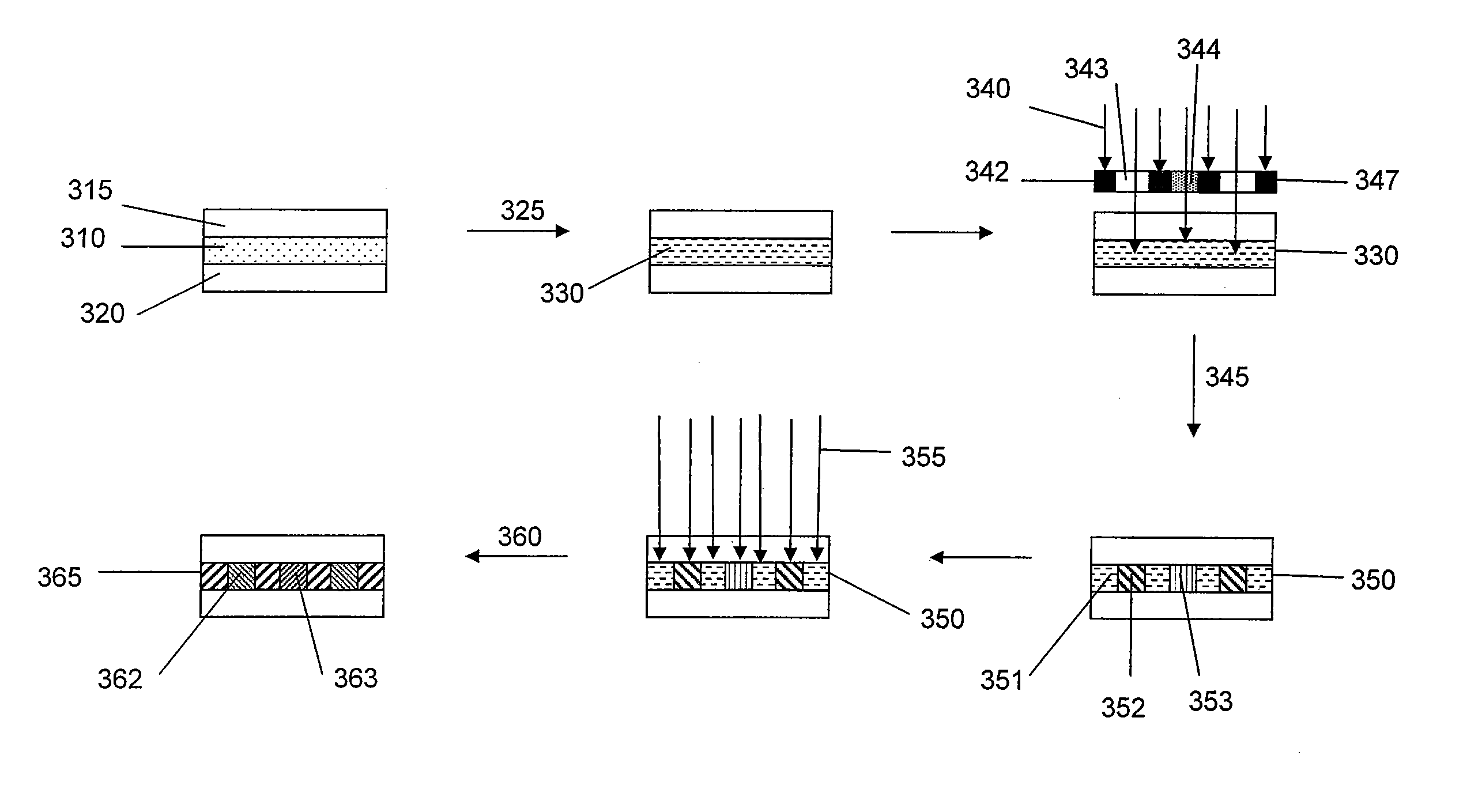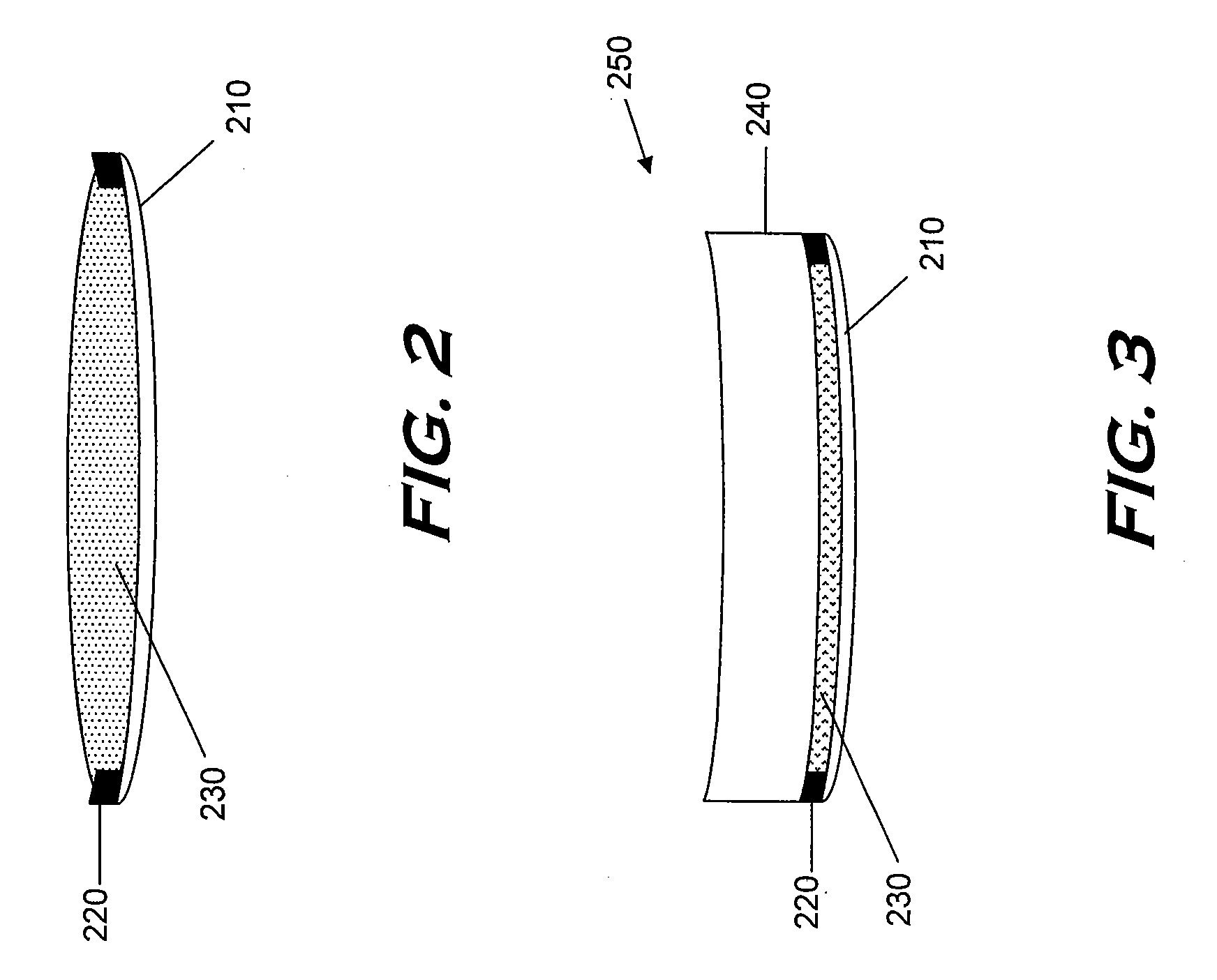Monomers and polymers for optical elements
a technology applied in the field of monomers and polymers for optical elements, can solve the problems of complex commercialization of such lenses, only able to correct relatively simple optical distortions, and fabricating techniques that are only capable of achieving relatively simple optical distortion corrections, and achieve the effect of inhibiting the polymerization of the monomer mixtur
- Summary
- Abstract
- Description
- Claims
- Application Information
AI Technical Summary
Benefits of technology
Problems solved by technology
Method used
Image
Examples
example 1
[0080] A kit having Parts I and II was made as follows:
[0081] Part I: In a labeled 100 mL bottle, 6.000 g of pentaerythritol triallyl ether (70% triallyl), 13.000 g of trimethylolpropane tris(3-mercaptopropionate), 13.000 g of ATLAC (previously dissolved in acetone, filtered through a 2.5μ filter, and dried), 0.0088 g N-PAL and 0.044 g of Irgacure™ 184 were weighed. Using a stirrer bar and a magnetic stirrer, the ingredients was stirred for about 10 minutes to give a homogenous mixture. The mixture was rotary evaporated at 50° C. for 1-2 hours to evaporate all acetone.
[0082] Part II: In another labeled 30 mL amber vial, 4.000 g of pentaerythritol triallyl ether (70% triallyl), 8.000 g of trimethylolpropane tris(3-mercaptopropionate), and 0.528 g of amine (1838-L 3M Scotch™ Weld (Part A)) were weighed. Using a stirrer bar and a magnetic stirrer, the formulation was stirred for about 10 minutes to give a homogenous mixture.
example 2
[0083] A portion of Parts I and II (from the kit of Example 1) were mixed in a ratio of 2.53:1, respectively. The Part I composition was weighed carefully in a 100 mL beaker. Based on the amount of Part I formulation, the calculated amount of Part II was added into the same beaker. The two compositions were first mixed thoroughly by hand using a glass stirrer (glass was found to work better than metal), followed by mixing using a magnetic stirrer to form a mixture, then used immediately as described in Example 3.
example 3
[0084] The mixture of Example 2 was transferred to a glass plate equipped with a wire spacer. The mixture on the plate was degassed to remove trapped air. A thin glass plate was carefully placed over the glass plate and the plates were pressed firmly together, with the degassed mixture sandwiched between. The sandwiched mixture was cured by exposing it to ultraviolet light using a UV lamp (EXFO intensity=16.6 mW / cm2) for 5 minutes. The difference in the refractive index between the sandwiched mixture and the cured film was measured to be 0.024.
PUM
| Property | Measurement | Unit |
|---|---|---|
| refractive index | aaaaa | aaaaa |
| thickness | aaaaa | aaaaa |
| temperature | aaaaa | aaaaa |
Abstract
Description
Claims
Application Information
 Login to View More
Login to View More - R&D
- Intellectual Property
- Life Sciences
- Materials
- Tech Scout
- Unparalleled Data Quality
- Higher Quality Content
- 60% Fewer Hallucinations
Browse by: Latest US Patents, China's latest patents, Technical Efficacy Thesaurus, Application Domain, Technology Topic, Popular Technical Reports.
© 2025 PatSnap. All rights reserved.Legal|Privacy policy|Modern Slavery Act Transparency Statement|Sitemap|About US| Contact US: help@patsnap.com



